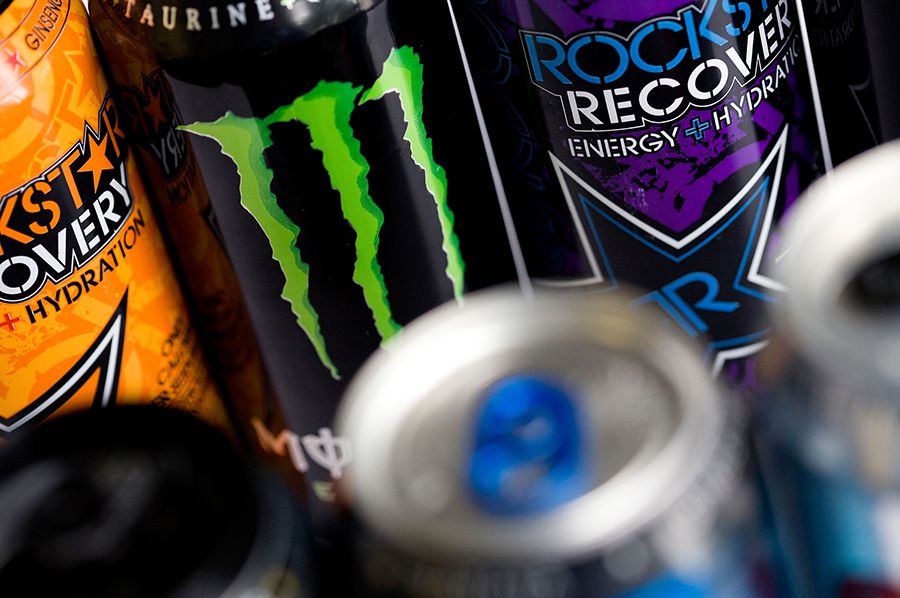If you rely on energy drinks to rev you up, this may change your mind: Teens who down the heavily caffeinated drinks may be more prone to traumatic brain injury (TBI), according to a new University of Toronto study.
Although TBIs happen in a variety of ways — falls, fistfights, car accidents — the No. 1 cause among teens is sports. And, unfortunately, the rate of brain damage is only rising: Between 2001 and 2009, the number of sports-related head injuries among children (ages 19 or younger) leapt by 57 percent, according to a CDC analysis.
“More and more, parents are insisting that their children have to be in extracurricular activities,” says Gabriela Ilie, lead author of the study, published in the journal PLOS ONE. Perhaps as a result, one in five teens now reports having incurred a traumatic brain injury — a blow to the head that leaves the victim unconscious for at least five minutes or hospitalized overnight — at some point in his or her life, both on and off the field, she says.
This has prompted some experts to call TBI among teens a problem of epidemic proportions. “The teenage years are very vulnerable years. Our brains are still developing into our 20s and 30s,” Ilie tells Yahoo Health. And a serious knock to the noggin can have consequences that extend well beyond being benched for a few games: Poor academic performance, substance abuse, suicide, and violent behavior have all been linked to traumatic brain injury, says Ilie.
To assess whether energy drink consumption — a persistent trend among young people — could play a role, Ilie and her team analyzed the survey responses of more than 10,000 young people ages 11 to 20, gauging things like alcohol intake and energy drink consumption, along with frequency of TBIs.
What they found: The odds of sustaining a TBI are higher among teens who drink energy drinks. Specifically, those who had consumed at least one of the supercharged beverages in the previous year were twice as likely to have experienced a recent TBI, compared to non-drinkers; while adolescents who downed five or more energy drinks in the past week were nearly seven times as likely to have suffered a recent brain injury. The same trend was observed among teens who reported mixing alcohol with energy drinks.
Of course, these findings aren’t causal. The researchers can’t definitively say that imbibing highly caffeinated drinks leads to TBIs. But “it wouldn’t be a surprise,” Ilie tells Yahoo Health. With some energy drinks packing as much caffeine as two shots of espresso, along with other stimulants like taurine and guarana, feeling jittery is almost inevitable. “That can predispose you to more accidents, because now you’re so hyper, you can’t focus and pay attention to what you’re doing,” says Ilie.
And, unfortunately, sports and energy drinks now seem to go hand in hand. Since the silver-canned elixirs are often marketed as sports drinks, young people may be downing them to hype themselves up before big games or high-risk recreational activities, like snowboarding. “The [advertising] campaigns usually suggest that energy drinks lead to increased muscle strength and endurance,” Ilie says. “Unfortunately, there is very little scientific evidence supporting these claims.” Even so, energy drinks have become like Gatorade to teens, despite the plea by the American Medical Association to ban the marketing of energy drinks to young people.
Perhaps more alarming is the off-the-field trend of mixing energy drinks and alcohol, with the aim of combining the rush of a Red Bull with the buzz of booze. The danger: “You’re intoxicated but wide awake,” says Ilie. “So you might be more prone to doing crazy things that if you weren’t intoxicated, you would never consider doing.” Add to that a high likelihood of overconsumption: A 2014 Journal of Pediatrics study found that mixing the two beverages was associated with binge drinking among teens. As a result, this risky mixing may be to blame for some of the TBIs among teens that occur in non-sports settings.
The solution? Ilie encourages parents to crack down on their kids’ energy drink consumption, while also digging deeper, figuring out why their teens are turning to the beverages, whether to ramp up their sports performance or simply to stay awake after an all-night texting session. But she also encourages young people to explore the health consequences of regularly chugging so much caffeine. “They have to take some responsibility,” Ilie says. “Take a step back and say, ‘What am I putting into my body and why?’ The fact that it’s legal compels some people to say, ‘I’m fine.’ But are you really? Research says otherwise.”
Fuente: www.yahoo.com
